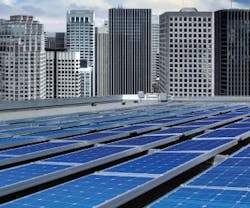Zero Energy Buildings on the Rise
There are close to 100 emerging, capable, and verified zero energy buildings (ZEBs) in the U.S., finds the New Buildings Institute (NBI). Also referred to as net zero, ZEBs use no more energy over the course of the year than they produce from on-site renewable sources.
The NBI recently conducted the first status report on commercial ZEBs. They found ZEBs have been successfully built in most U.S. climate zones, typically have a footprint of 5,000-15,000 square feet, and each project depends on PV panels.
Reported incremental costs are only available from a few verified ZEBs, and conclusions or trends are difficult to derive from the limited information available. However, the few reported ZEBs appear to show lower overall incremental costs (0-10%) than the modeled estimates, possibly due to trade-offs with other features in the design and construction process.
ZEBs are constructed using readily available technology. An integrated design approach with careful attention to building site and layout, envelope, mechanical systems, and electrical systems is critical to achieve high levels of energy efficiency. Other features common to ZEBs are cool roofs, daylighting, high efficiency lighting, HVAC systems with heat recovery, and natural ventilation.
Unique or experimental systems are infrequently used to reach net zero goals, but the emergence of new technologies will be a factor in the expansion to more building types.
As larger buildings move toward ZEB, minimizing plug loads and other “unregulated” loads is a priority, the study notes. At present, ZEBs are becoming a realistic option for smaller buildings in moderate climates.
